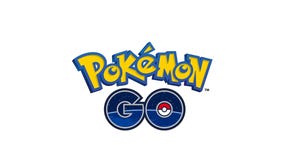No wonder Pokemon Go had a rough launch - traffic was 50 times what Niantic expected
Pokemon Go demand outstripped server supply by a very wide margin.
Pokemon Go is powered by Google cloud tech, which really ought to make it near impervious to stress; Google's resources are absolutely enormous.
But even with Google's tech and a soft, region-by-region launch, Pokemon Go was almost unplayable for huge numbers of players for days after release. How did this happen?
Turned out Niantic really under-estimated the app's popularity. A chart released by Google shows the developer allowed for a worst-case scenario of five times its target traffic - but Pokemon Go actually drew traffic 50 times that target amount and ten times the worst-case scenario.
15 minutes after Pokemon Go first launched in Australia and New Zealand, Niantic was on the phone to Google: traffic was already well over its expectations. Google and Niantic battened down the hatches for US launch. Google CRE and Niantic apparently "worked hand-in-hand with Niantic to review every part of their architecture, tapping the expertise of core Google Cloud engineers and product managers — all against a backdrop of millions of new players pouring into the game".
In its efforts to keep up with demand, Google had to add "more than a thousand additional nodes", whatever that means, to the app's infrastructure without disrupting existing players as millions more rushed to sign-up. The two companies also worked together to convert the Network Load Balancer Pokemon Go had been using to a "newer and more sophisticated HTTP/S Load Balancer" - again, without disrupting existing players and new sign-ups.
These changes made things smoother when Pokemon Go launched in Japan, at which point "the number of new users signing up to play tripled the US launch two weeks earlier". Pokemon Go uses more than a dozen Google Cloud services, apparently, and Google provisioned "many tens of thousands of cores" to cope with the app's enormous user base.
Although there were plenty of complaints at the time, the rocky launch didn't seem to put anybody off; Pokemon Go became one of the most successful apps of all time, and even now as a lack of new content sees players drop off in large numbers it remains a hugely powerful force in the smartphone world.





.jpg?width=291&height=164&fit=crop&quality=80&format=jpg&auto=webp)












